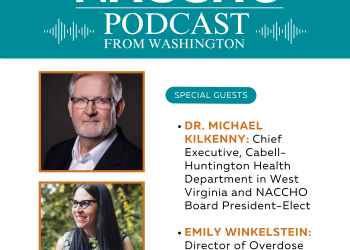Today, February 14, 2019, the Centers for Disease Control and Prevention (CDC) published a new national analysis in Morbidity and Mortality Weekly Report (MMWR) finding that drug use more than doubled among heterosexuals with syphilis from 2013-2017. Additionally, there is a supplement to the STD surveillance report addressing this data.
The MMWR article analyzed self-reported risk behaviors of women and men who have sex with women (MSW) diagnosed with primary and secondary (P&S) syphilis from 2013-2017. The data showed a substantial spike in methamphetamine, injection drugs, and heroin use over the five-year period. For women with syphilis, use of these drugs increased in every region and was notably highest in the West for both men and women. These data suggest a merging of two epidemics: heterosexual syphilis and drug use.
Confronting these intersecting epidemics will require collaboration on all fronts, including between STD programs and substance use disorder prevention and treatment programs, as well as harm reduction programs and other organizations providing services to people with substance use disorders in the local community.
Learning more about the link between high-risk substance use (HRSU), such as opioids and methamphetamine, and STDs is key to providing appropriate care and treatment. STD clinics may have a critical and untapped role to play in connecting people to substance use care. NACCHO has recently begun a project designed to respond to this need. Funded by the CDC’s Division of STD Prevention, Uniting Resources: Using STD Clinics to Manage High-Risk Substance Use aims to increase the capacity of STD clinics to address HRSU among individuals visiting STD clinics. The project will contribute to the evidence base regarding HRSU in the context of high-risk sex and develop an assessment tool that will enable STD clinics to identify patients with substance use disorder, evaluate the potential for patient behavior change, and connect patients to treatment. NACCHO intends to implement this intervention package in several STD clinics, and a request for applications is forthcoming.
More information on ways programs can collaborate to respond to high-risk substance use among heterosexuals with syphilis, as well as about how CDC’s flagship STD prevention funding supports this work, is available in a Dear Colleague Letter from Dr. Gail Bolan, CDC’s STD Director.


